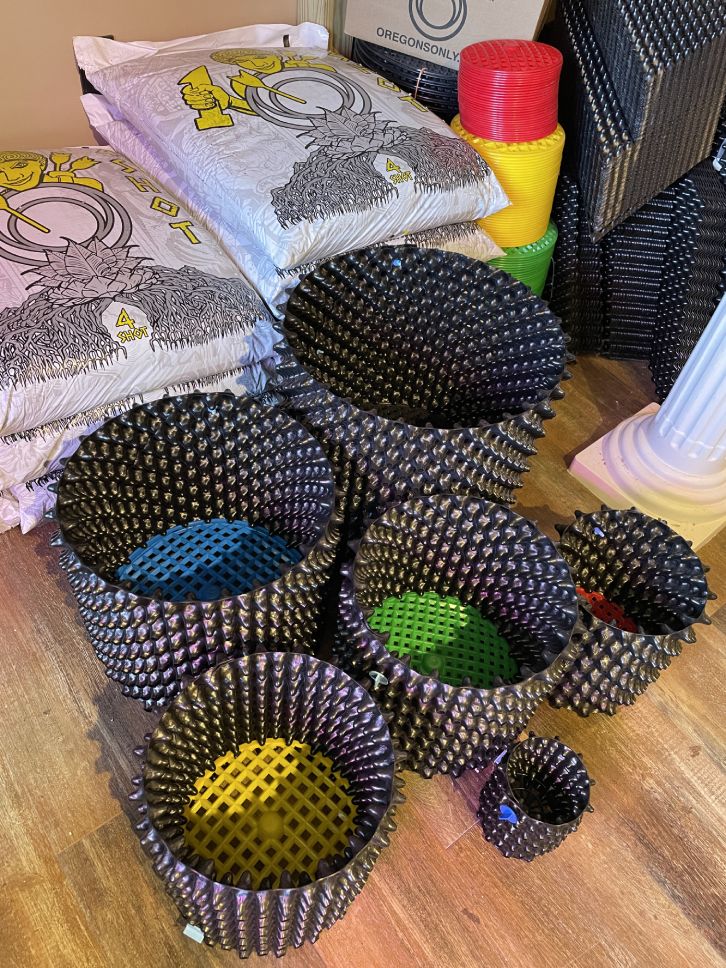Reinvent Your Yard with The Indoor Earthworm's Planting Strategy
Using the Power of Hydroponics: a Deep Dive Into Uses and Different Types
In the realm of contemporary farming, hydroponics has actually become an approach that tests traditional farming practices by providing a space-saving and water-efficient choice. The application of hydroponic systems opens a globe of opportunities for growing plants in varied atmospheres, eventually affecting food production and sustainability. As we navigate through the elaborate landscape of hydroponics, discovering its different kinds and applications, a deeper understanding of its prospective to change farming methods and address worldwide food protection problems starts to unravel.
Benefits of Hydroponic Farming
Undoubtedly, the benefits of hydroponic farming are ending up being increasingly recognized in modern-day farming techniques. Hydroponic farming offers many benefits over conventional soil-based agriculture. Among the primary advantages is water efficiency; hydroponic systems consume to 90% much less water compared to conventional farming methods. This decrease in water use is vital in combating water shortage issues worldwide.
Moreover, hydroponic farming permits greater control over nutrient levels, resulting in faster plant development and higher yields. By providing essential nutrients straight to the plant origins, hydroponic systems advertise healthier and much more durable plant advancement. Additionally, the controlled environment of hydroponic systems decreases the danger of conditions and bugs, lowering the need for hazardous chemicals and herbicides.

Typical Kinds of Hydroponic Systems
Offered the many benefits of hydroponic farming, it is necessary to explore the different common types of hydroponic systems utilized in modern-day agriculture. One prevalent kind is the Deep Water Culture (DWC) system, where plant roots are immersed in a nutrient service. Another usual system is Nutrient Movie Method (NFT), which entails a slim film of nutrient-rich water flowing over the roots - The Indoor Earthworm. The Ebb and Flow system, also recognized as Flood and Drain, occasionally floodings the plant origins with nutrient option prior to draining it. Aeroponics attracts attention for its approach of putting on hold plant origins airborne and misting them with a nutrient solution. Trickle systems deliver a controlled amount of nutrient solution straight to the plant's base. Wick systems, the simplest type of hydroponics, make use of a wick to passively provide nutrient service to the plant roots. Each of these systems uses distinct benefits and caters to various plant kinds and development phases in hydroponic farming.
Nutrient Movie Technique (NFT) System

Among the essential advantages of the NFT system is its water effectiveness. The Indoor Earthworm. Given that the nutrient solution is recirculated in a closed system, this approach makes use of substantially much less water compared to typical soil farming. In addition, the NFT system is space-efficient, making it optimal for interior farming or in areas with restricted room for traditional farming
However, the NFT system requires careful monitoring and maintenance to make sure the continual flow of water and nutrients. Any type of disruption in the circulation can quickly affect plant health and wellness. On the whole, the NFT system click for more offers a reliable and lasting way to grow plants hydroponically, specifically for crops that prosper in well-oxygenated origin environments.
Deep Water Culture (DWC) System
Moving from the Nutrient Film Method (NFT) system, the Deep Water Culture (DWC) system is a hydroponic technique that includes putting on hold plant origins straight in a nutrient remedy. Unlike NFT, where origins are continually revealed to a slim movie of nutrient remedy, DWC plants have their origins immersed in a storage tank loaded with oxygenated vitamins and mineral water. The origins hang in the nutrient remedy, enabling straight uptake of water and important nutrients.
One of the vital advantages of the DWC system is its simplicity and low click now maintenance needs. The consistent accessibility to oxygen and nutrients promotes rapid growth and greater returns. Nevertheless, DWC systems call for appropriate aeration to prevent root rot and guarantee optimal nutrient absorption. Routine monitoring of pH degrees and nutrient concentrations is important to stop imbalances that could damage plant health and wellness.
Aeroponic System
An ingenious technique in hydroponics growing, the Aeroponic System utilizes a misting or fogging system to supply nutrients directly to plant roots put on hold in the air. This system is recognized for its capability to advertise rapid growth and effective nutrient uptake due to the straight delivery of nutrients to the roots, permitting the plant to focus its energy on growth instead than looking for nutrients.
Among the key advantages of aeroponics is its water effectiveness, as the system makes use of considerably less water contrasted to traditional soil-based growing techniques. In addition, the specific distribution of nutrients straight to the origins can result in higher yields and faster development prices. While aeroponics can be extra complex to establish and maintain compared to other hydroponic systems, its potential for enhanced plant growth and efficiency makes it a popular choice for industrial cultivators and hydroponic lovers looking for ideal outcomes.
Verdict
Finally, hydroponic farming supplies various benefits and various kinds of systems to pick from. The Nutrient Movie Method (NFT) system, Deep Water Culture (DWC) system, and Aeroponic system are amongst one of the most usual techniques used in hydroponics. Each system has its very own benefits and constraints, making it necessary for farmers to very carefully consider their requirements and preferences prior to picking the most suitable system for their plants.
Unlike more helpful hints other hydroponic systems where plants are submerged in a nutrient remedy, in the NFT system, the origins are exposed to the water just in a superficial film.Relocating from the Nutrient Film Strategy (NFT) system, the Deep Water Society (DWC) system is a hydroponic technique that includes suspending plant origins directly in a nutrient service.A cutting-edge approach in hydroponics cultivation, the Aeroponic System uses a misting or fogging system to provide nutrients directly to plant roots suspended in the air. The Nutrient Film Technique (NFT) system, Deep Water Culture (DWC) system, and Aeroponic system are among the most typical techniques used in hydroponics. Each system has its very own advantages and limitations, making it crucial for farmers to meticulously consider their requirements and choices prior to choosing the most ideal system for their crops.